Different Types of Service Dogs, How They Help Their Humans With Disabilities and More
Service dogs (or assistance dogs) play an integral role in their owners’ lives, helping them deal with and overcome various challenges. Read on to learn more about the different types of service dogs, their daily duties and more.
DOG HEALTH
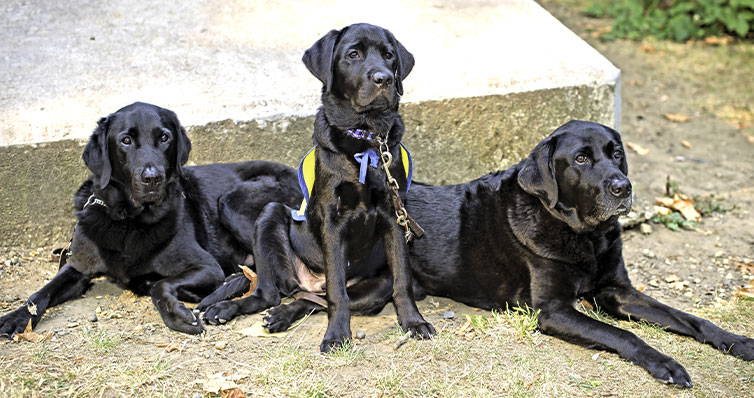
Posted by bravectosouthafrica – 11 November 2020
An Introduction to the Service Dog
For the longest time in human history, dogs have proven to be our best friends. These loyal animals play an important role in our daily lives. This is even truer for those who own or work alongside service dogs. People who have to deal with the daily consequences of physical, mental and/or neurological health issues can attest to just how invaluable the constant companionship of a service dog is.
Various studies throughout the years have proven that dogs offer us plenty of health benefits, like improving our overall happiness, lowering our stress levels and boosting our fitness. A service dog typically provides all of these benefits and more. These dogs are also well-trained and equipped with the right skills to meet their owner’s specific needs, helping them to overcome their disabilities. Over the past decade, the use of the service dog has grown rapidly.
The use of service dogs has come a long way. Back in the 1920s, a service dog would have almost always been a seeing eye dog and that would mean the dog was likely a German shepherd. Nowadays, service dogs help a variety of people and not just those with a visual impairment. Service dogs today also come in a variety of shapes, sizes and breeds.
What Is a Service Dog?
A service dog (also called an assistance dog) – and by extension, a service animal – is defined as a dog/animal that is individually trained to perform tasks or do work for people who have a disability. In this definition, ‘disability’ refers to any mental or physical impairment that considerably limits one or more than one of a person’s major life activities. This includes people who have a history of such an impairment or that are perceived by others as dealing with such an impairment.
Different types of service animals include, but are not limited to, the following:
- Dogs – the focus of today’s topic
- Miniature horses
- Monkeys
A service dog undergoes service dog training to do certain actions, whenever it is needed, for example, to help a person overcome their specific disability. Whichever task the dog or service animal performs is exactly related to meet their specific owner’s needs. An example of this is a guide dog helping a visually impaired person to get around, while a medical alert dog will notify their owner of the onset of a medical problem such as low blood sugar levels, an oncoming seizure, etc.
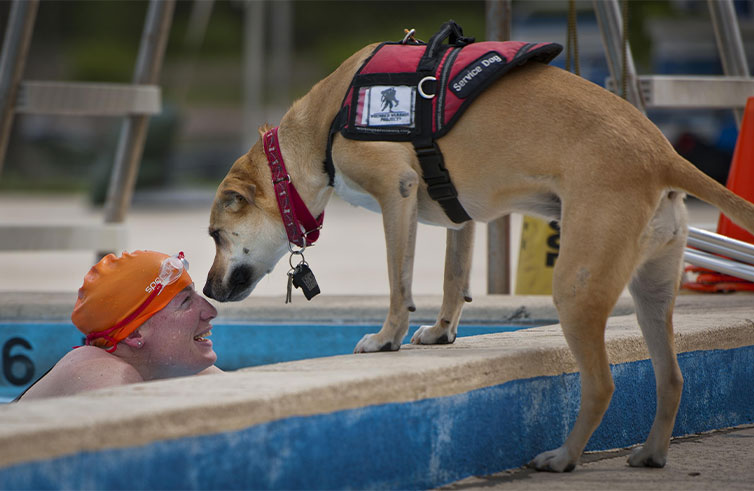
Popular Service Dog Breeds
You may have a specific image in your head of what a service dog looks like. It is likely a Labrador retriever, golden retriever or German shepherd with the appropriate vest. Service dogs, however, are not limited to these three dog breeds, although they’re the most common. In the end, the size of the dog plays a big role in which breed will be most appropriate to assist a person.
As mentioned before, service dogs can come in plenty of sizes. The dog’s size must be appropriate to comfortably and effectively complete tasks for their owner, helping to alleviate the effects of the disability in question or to perform the highly trained activity needed. Think of it this way: a little papillon simply doesn’t have the strength to pull a person’s wheelchair, but they can be trained as a highly-capable hearing dog. Just like humans, different dog breeds have different strong suits.
A dog breed like the poodle is especially versatile, thanks to their high intelligence and variety of sizes (poodles come in toy, miniature and standard sizes). By training a toy poodle puppy with scent training games from early on, it can grow up to be a skilled medical response dog, alerting its owner to oncoming medical situations such as a sudden drop or spike in blood sugar levels. The much bigger standard poodle puppy, on the other hand, can be taught to carry various objects or activate light switches for their owners.
In the end, dogs that make the best service dogs are the ones that are focused on their handlers, unbothered by distractions, as well as highly trained to perform a variety of specific tasks. These dogs aren’t diverted from their duties easily, whether they’re in public or at home. They remain responsive and attentive to their owners while working. Any dog that exhibits these traits has the potential to become a service dog, regardless of their breed, mix or heritage.
10 of the Most Commonly Encountered Types of Service Dogs
There are plenty of different service dog types, each specialised in performing tasks to assist with a specific disability or set of disabilities. Please keep in mind that service dogs are not pets, but working animals. Do not try and interfere with these dogs if you encounter one while out and about. They are busy doing their job. Always ask permission before attempting to give attention to strangers’ dogs, especially if those dogs happen to be service animals.
Here follow 10 of the most commonly encountered types of service dogs in South Africa.
#1 Guide Dogs
Dogs for the blind or visually impaired are called guide dogs or seeing eye dogs and are probably the most commonly encountered service dog. Guide dogs help their owners to safely navigate around any obstacles encountered throughout the day. Dog breeds most often chosen to become guide dogs include:
- Golden retrievers
- Labrador retrievers
- Labrador/golden retriever mixes
Guide dogs have been a huge help for the blind and visually impaired people of the population for centuries. In fact, their use may date back as long ago as Roman times. A guide dog might not always be seen wearing a jacket, but they usually wear a special harness, equipped with a handle.
A dog is trained for between 14-18 months. A puppy will live with a puppy raiser full-time and will be taken along everywhere, to socialise and be introduced to all of the world’s sights, smells and sounds. They are also taught the right obedience skills. When they are around a year old, the guide dogs in training will return to a training facility and proceed to learn how to assist a blind or visually impaired person in navigating the world.
These assistance dogs learn skills such as the following during dog training:
- Stopping at the curb
- Avoiding any overhead obstacles
- Helping their owner locate door handles
One critical skill these dogs learn is ignoring any commands that may end up putting themselves and their owners in danger.
Once they’ve been properly trained, a dog will be paired with a visually impaired/blind person in need of a service dog and the team will go through a 2-4 week long training program. Dogs are paired with their potential owner based on both the personality and temperament of the dog and person.
Contact the South African Guide-Dogs Association for the Blind if you or a loved one are looking for a service dog. Note: you need to be older than 18 to apply for a service dog with the South African Guide-Dogs Association for the Blind.
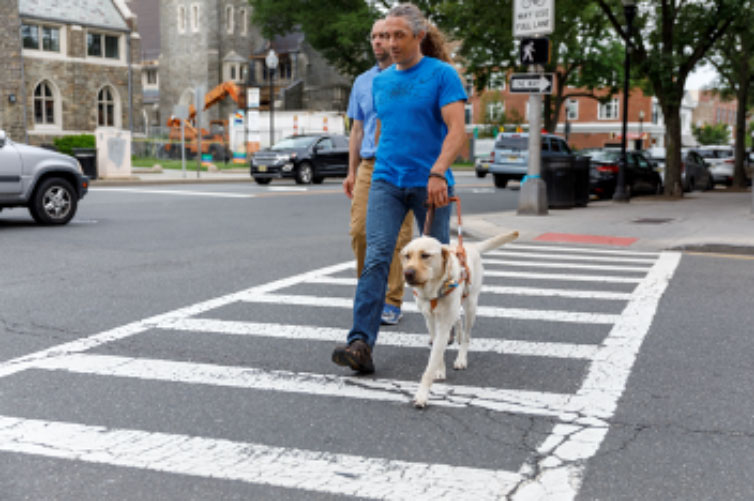
#2 Hearing Ear Dogs
People with a hearing impairment will benefit from being paired with a hearing ear or simply hearing dog. These specialised service dogs are trained to aid the hard of hearing person by alerting them to sounds like knocks at the door, doorbells, crying babies and alarms. In the event of such a noise, the hearing dog will touch their owner and lead them towards it.
Golden retrievers and Labradors are, once again, some of the most frequently selected dog breeds to become hearing dogs. However, plenty of other dog breeds have also been successfully trained as hearing dogs, including miniature poodles and cocker spaniels.
Assistance Dogs International has stated that small-to-medium-sized mixed breed dogs, obtained from animal shelters and rescues, have also successfully been trained to become hearing dogs. They’ve gone on to state that terrier mixes, as well as cockers, Chihuahuas, Lhasa apsos and shih tzus, have all been selected to become hearing dogs for those in need, due to their personality and temperament.
A hearing dog is raised similarly to a guide dog and once their dog training is complete, they get matched with a prospective owner too. The pair proceed to go through a 2-4 week long program where they get to know each other better. During this time, the dog is also taught any special skills it might need to assist its owner.
#3 Mobility Assistance Dogs
A mobility assistance dog’s job is to assist people who have to deal with a range of mobility issues. These assistance dogs aid their owners by helping to pull a wheelchair up a ramp, serving as a brace for the ambulatory, pressing the buttons on automatic doors and bringing objects to their owners. Those who suffer from arthritis, brain injuries and spinal cord injuries can all benefit from an assistance dog like this.
It is usually important that the mobility assistance dog be big enough to support their owner, although dogs of many different sizes can be trained to become this type of service dog.
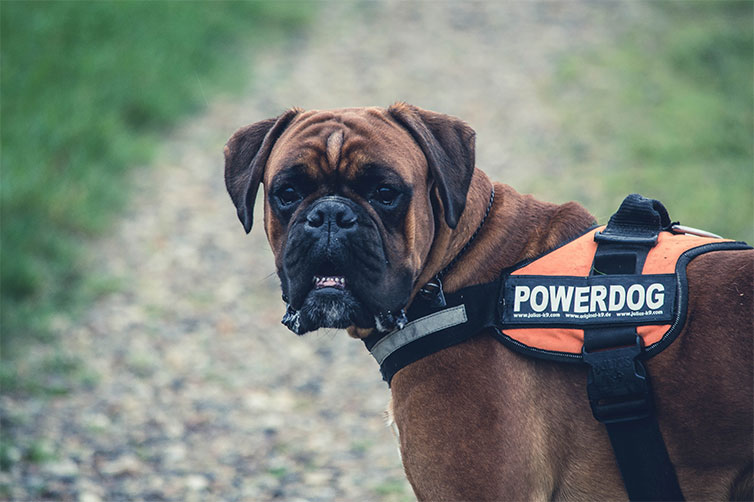
#4 Seizure Response Dogs
A person with epilepsy may find it especially helpful (and comforting) to own a seizure response dog. These dogs are trained to provide aid to their owners when they suffer a seizure and can even help their owners get out of an unsafe location. They tend to stay close to their owners during a seizure and may start barking until help arrives or they may go and find the nearest person and lead them back to their owners.
Seizure alert dogs are typically also trained to bring their owners a phone or medication, once they start coming out of their seizure.
#5 Diabetic Alert Dogs
These are service dogs for diabetics and they are also known as DADs for short. DADs provide their owners with a sense of independence and security, alerting them to blood sugar changes before they become dangerous.
The training a diabetic alert service dog undergoes teaches them to detect any dips or spikes in a person’s blood sugar levels, based on the person’s smell or sweat. As soon as an assistance dog of this kind senses a chemical change, they will alert their owner. Owners can then take the necessary action (i.e. test their blood, inject insulin, eat something, etc.). Plenty of diabetic alert dogs are also trained to alert others or set off an alarm system when their owner needs help.
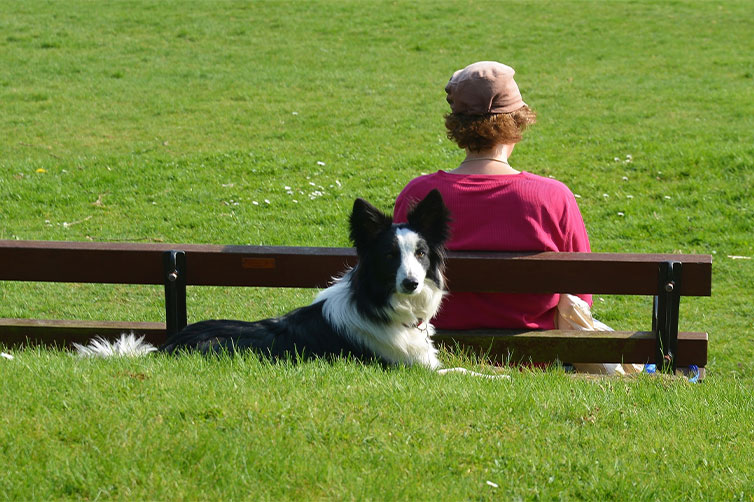
#6 Autism Support/Sensory Signal/Social Signal Dogs
When paired with children with autism, these support dogs provide the child with a certain sense of predictability, as the child navigates social settings. This kind of assistance dog can be of huge help to a child struggling to connect with their classmates/peers. A dog acts as the perfect icebreaker when the child finds themself in a social situation. These dogs improve their young owner’s quality of life by providing comfort during stressful times, as well as reducing feelings of isolation. An autism support dog may also be trained to keep a child from running off, as well as be able to track the child, in the event they were able to run away.
Dogs can also be taught to interrupt their owners when they start to display self-injurious or repetitive behaviours, which are common to many on the autism spectrum.
#7 Psychiatric Service Dogs
This type of service dogs can be seen assisting people with mental health issues such as anxiety, depression and post-traumatic stress disorder (PTSD). Those who’ve seen active combat, worked as a first responder or have suffered life-altering events like car crashes, abuse, terrorism and natural disasters can all benefit from the companionship of a service dog.
Some owners may feel extremely vigilant when it comes to anything affecting their safety. A service dog is taught to help make its owner feel better and thus safer. Psychiatric service dogs may do things like enter the home before their owners and switch on the lights by using a foot pedal. They may also help a person with a PTSD diagnosis to feel less overwhelmed when out in public, by acting as a physical barrier between their owner and others.
#8 Social Anxiety Dog
Social anxiety dogs are support dogs, trained to provide their owners with physical comfort, whenever they pick up on rising panic levels. One clever skill they do have is pretending they have to relieve themselves, giving their owners a valid excuse to leave a situation, without feeling even more awkward.

#9 Allergy Detection Dog
Now we get to the dogs that are trained to do allergy detection. The service dog specialising in allergy detection is not for those suffering from mild allergies but for those in which they could prove fatal. A service dog is taught to sniff out and alert their owner to anything that could trigger their allergic reaction.
Allergy detection dogs allow their owners to enjoy a greater sense of independence and security.
#10 FASD Service Dog
This new and emerging service dog category aims to support children with a disability, who were exposed to alcohol in the womb – i.e. individuals diagnosed with foetal alcohol spectrum disorders (FASDs). Children suffering from any of these disorders may experience physical and mental challenges, as well as behavioural and learning issues.
These service dogs are trained in a similar way to autism service dogs and can also be taught to interrupt their owner’s repetitive behaviours.

Remember: if you or a loved one are looking for a service dog, contact the South African Guide-Dogs Association for the Blind. To apply for a service dog, you must be over 18 years old.
Bravecto® Supports Service and Other Working Dogs in South Africa
Service animals contribute immeasurably to the lives of their owners, but there are plenty of other working dogs out there too. Just think of therapy and emotional support animals, as well as those that work to protect their fellow animals.
Bravecto® is thankful for the good work dogs do every day to make the lives of their owners and other creatures better. This is why Bravecto® is a proud sponsor of the anti-poaching dogs at Pit Track and the guardian dogs at Korky Cheetah Trust, such as Jessie the border collie who is helping conserve the endangered Riverine rabbit as well as for the visually impaired Janie’s beloved guide dog, Iliana.
Whether your canine companion is a working dog, service dog, therapy dog, emotional support dog or a household pet, you must keep them free of ticks, fleas and mites. Bravecto® is a fast-acting and long-lasting tick, flea and mite treatment, no matter which option you choose. Feed your dog a single, tasty Bravecto® Chew and they will be safe from fleas, ticks and mites for 12 whole weeks. Opt for a dose of Bravecto® Spot-On for Dogs and your dog will remain tick-free for 4 months and flea-free for 6 months. You simply part the hair between your dog’s shoulder blades and apply the topical treatment directly to the exposed skin. It is a stress-free and easy solution to external parasites.
Your dog deserves the best because they only want what’s best for you. Want to know how to be a hero to your dog? Treat them with Bravecto®!
Subscribe to our Newsletter
Get to know your furry friend better! Sign up for all things dog- or cat-related.
The Hairy Facts about the dreaded hairball
12 April 2021
Help! My dog’s barking mad! Volume 2
12 April 2021
Your Itchy, Scratchy Cat – All About Cat Skin Problems
12 April 2021
The Dog’s Diet: A Bone of contention?
01 April 2021
Mango Fly Worms: How to Spot and Eliminate them
Posted on November 28,2019
Managing Mange And Mites In Your Dog
Posted on June 11,2018
Why Do Cats Purr and How? Learn What Your Cat Is Saying
Posted on October 14,2020
How to Get Rid of Ear Mites in Dogs
Posted on November 06,2019









